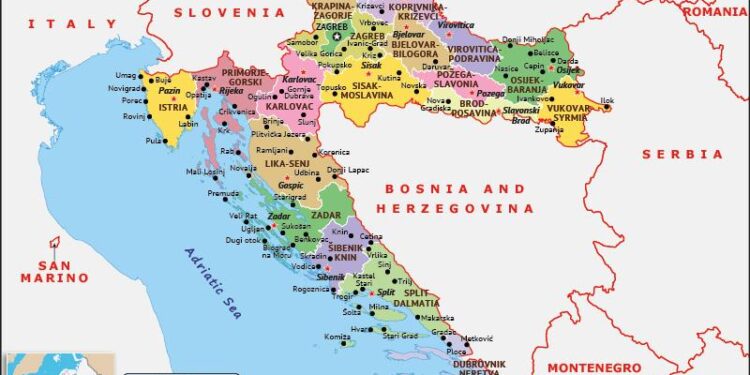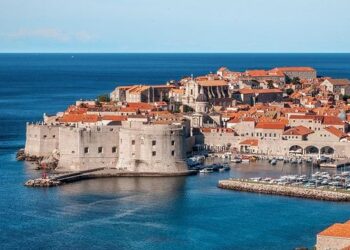Croatia has reported a notable decline in new work permit applications amid a growing trend of migrants remaining in the country beyond their initial employment terms. According to recent data, fewer foreign nationals are seeking official authorization to work, as many opt to extend their stay through alternative legal means. This shift comes as the introduction of the European Travel Information and Authorization System (ETIAS) is set to streamline border controls across the continent, impacting migration patterns in Croatia and the wider region. Experts suggest that these developments could have significant implications for the country’s labor market and immigration policies.
Croatia Sees Decline in Work Permit Issuance Amid Rising Migrant Population
The recent statistics reveal a noticeable drop in the number of work permits issued in Croatia, a trend that contrasts sharply with the ongoing increase in the migrant population settling in the country. Authorities suggest that stricter regulations, processing delays, and shifting economic priorities are contributing factors. Meanwhile, many migrants remain in the country without official employment authorization, raising concerns about labor market pressures and social integration challenges.
Key points influencing this development include:
- Policy tightening: New legislative measures have slowed permit approvals to better control labor market saturation.
- Economic impact: Employers face difficulties filling positions legally due to permit backlogs, potentially affecting productivity.
- Social dynamics: Migrants without permits often rely on informal employment or social assistance, increasing strain on public services.
| Year | Work Permits Issued | Migrant Population Growth |
|---|---|---|
| 2021 | 45,000 | 8% |
| 2022 | 39,500 | 12% |
| 2023 | 33,200 | 15% |
Impact of Migrant Integration on Labor Market and Social Services in Croatia
Croatia’s labor market is experiencing a notable shift as migrants increasingly remain without seeking new work permits, reflecting deeper integration trends. This phenomenon has prompted employers to adapt, with many pivoting towards retaining existing migrant workers who bring valuable skills and diversity to the workforce. While the overall number of newly issued work permits has dipped, the sustained presence of migrants is helping to fill gaps in sectors such as construction, hospitality, and agriculture – industries historically challenged by labor shortages. Experts highlight several key effects:
- Steady inflow of diverse skill sets boosting productivity
- Pressure on wage structures easing as migrant retention stabilizes supply
- Enhanced cultural exchange driving workplace innovation and flexibility
Social services in Croatia have also adapted to this evolving demographic, balancing the need to support long-term residents with migrants’ integration demands. Municipalities report a mixed impact, with increased usage of healthcare, education, and housing services, but also note stronger community contributions from migrants through taxes and local engagement. The government’s programs promoting language education and professional training are credited with smoothing this transition. The table below summarizes recent data reflecting these dynamics:
| Service Area | Usage Increase (%) | Government Support Focus | ||||||||||||||
|---|---|---|---|---|---|---|---|---|---|---|---|---|---|---|---|---|
| Healthcare | 12 | Multilingual services | ||||||||||||||
| Education | 18 Croatia’s labor market is experiencing a notable shift as migrants increasingly remain without seeking new work permits, reflecting deeper integration trends. This phenomenon has prompted employers to adapt, with many pivoting towards retaining existing migrant workers who bring valuable skills and diversity to the workforce. While the overall number of newly issued work permits has dipped, the sustained presence of migrants is helping to fill gaps in sectors such as construction, hospitality, and agriculture – industries historically challenged by labor shortages. Experts highlight several key effects:
Social services in Croatia have also adapted to this evolving demographic, balancing the need to support long-term residents with migrants’ integration demands. Municipalities report a mixed impact, with increased usage of healthcare, education, and housing services, but also note stronger community contributions from migrants through taxes and local engagement. The government’s programs promoting language education and professional training are credited with smoothing this transition. The table below summarizes recent data reflecting these dynamics:
|
















